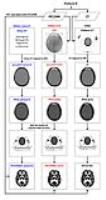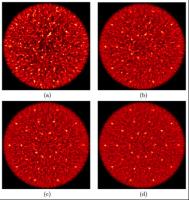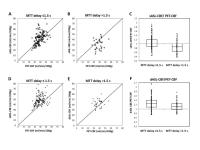ISMRM 24th Annual Meeting & Exhibition • 07-13 May 2016 • Singapore |
|
Weekend Educational Course: PET-MRI: Devices, Radiotracers & Applications
Skill Level: Intermediate
Organizers: Andrei H. Iagaru, M.D., Ryan Niederkohr, M.D., N. Jon Shah, Ph.D. & Greg Zaharchuk, M.D., Ph.D.
Saturday 07 May 2016 |
Overview
This course will cover the topic of PET/MRI, ranging from technical
development to clinical applications. Technical development will include
understanding basic MR approaches to attenuation correct and motion
correction. A session will discuss radiotracers from chemistry to new
agents to regulatory issues confronting the new investigator. Finally,
we will provide a broad overview of clinical and research applications
within the body and in the brain.Target Audience
MRI scientists and clinicians interested in combined PET-MRI. Nuclear
Medicine physicians and researchers interested in learning more about
combined PET-MRI.
Educational Objectives
Upon completion of this course, participants should be able to:
- To learn basics of PET/MRI
scanner design and attenuation correction algorithms;
- To understand how radiotracers are made and novel
organ- and function-specific probes; and
- To develop time-efficient PET/MRI workflow for various clinical
applications.
|
|
PROGRAM |
|
Moderators:
N.Jon Shah, Greg Zaharchuk |
| |
|
|
Physics & Technology Issues in PET/MRI |
|
07:30
|
|
PET/MRI Scanner Overview 
Jae Sung Lee1
1Department of Nuclear Medicine, Seoul
National University, Seoul, Korea, Republic of
|
08:00
|
 |
Attenuation & Motion Correction Strategies for PET Using
PET/MRI 
Youngho Seo1
1Department of Radiology and Biomedical
Imaging, University of California, San Francisco
Attenuation correction (AC) for PET reconstruction using
PET/MRI is not trivial. MRI-based segmentation, atlas
registration, and time-of-flight derived attenuation
coefficients are most commonly applied and studied
approaches for AC. Motion management of PET
reconstruction, aided by the temporal resolution of MR-based
signal, is promising, but still requires extensive
investigation and robust method development.
|
08:30
|
 |
Time-of-Flight: Do We Need It in PET/MRI? 
Christoph Lerche1
1Institute for Neuroscience and Medicine,
Forschungszentrum Jülich GmbH, Jülich, Germany
The aim of this presentation is to introduce the
participant into Time-of-Flight (ToF) Positron Emission
Tomography. General concepts of ToF-PET, fundamental
limits and most important characteristics of the key
components scintillator and photo detector will be
discussed. The correlation between timing resolution and
image SNR, which is the main benefit of the timing
measurement, will be introduced by means of examples
from real patient examinations and simulations. Special
emphasis will be put on completely new imaging
application enabled by ToF-PET and on the potential of
ToF-PET for simultaneous MR/PET imaging.
|
09:00
|
|
Future Directions in PET/MRI - Permission Withheld
Craig Levin1
1Radiology, Stanford University, Stanford,
CA, United States
|
09:30
|
|
Break & Meet the Teachers |
|
| |
| |
|
|
PET Radiopharmacy |
|
10:00
|
|
PET Radiopharmacy 101 
Frederick T. Chin1
1Stanford University
|
10:30
|
|
Radiation Safety & Procedures - Permission Withheld
S. Somanesan1
1Singapore General Hospital
Knowing how to protect oneself from radiation is an
important aspect in the healthcare imaging workplace.
Besides self-protection, knowledge about radiation can
also aid healthcare professionals safeguard the health
of their patients from excessive radiation. This talk
serves to provide participants a basic understanding of
ionizing radiation, X-rays and radiobiology, as well as
unravel the mystery of minimizing radiation doses in
medical imaging.
|
11:00
|
|
Beyond FDG: New Tracers 
Dale L Bailey1
1University of Sydney, Sydney, Australia
PET/MRI has the potential to offer not just
structure/function characterisation, but
structure/function/tissue characterisation in a way that
conventional CT combined with PET cannot provide. This
talk will explore options beyond conventional FDG whole
body PET/CT for detailed characterisation of the
individual patient and their disease.
|
11:30
|
|
Regulatory Issues for Radiotracers around the World 
David Dick1
1Radiology, University of Iowa
This presentation will highlight the differences between
PET radiopharmaceuticals and MRI contrast agents with
respect to regulatory approval in order to educate those
working with PET/MRI on the regulatory framework under
which PET radiopharmaceuticals can be administered.
|
12:00
|
|
Lunch & Meet the Teachers |
|
| |
| |
|
|
Clinical Hybrid Imaging Throughout the
Body |
|
13:30
|
|
Interpreting FDG PET images - a Crash Course 
Eric M. Rohren1
1Baylor College of Medicine
|
14:00
|
|
Clinical PET/MRI: Workflow Considerations 
Marius Mayerhoefer1 and
Matthias Eiber2
1Medical University of Vienna, Vienna,
Austria, 2Technical
University of Munich, Munich, Germany
|
14:30
|
|
Oncological PET/MRI: Where Will it Replace PET/CT? 
Thomas Hope1
1University of California, San Francisco
|
15:00
|
|
Cardiac PET/MRI 
Osman Ratib
The development of hybrid PET/MRI imaging devices
provides new perspectives in cardiovascular imaging.
While these two imaging modalities (PET and MRI) have
gained well-established diagnostic value in clinical
practice, the ability to acquire both modalities in a
single session opens new perspectives in workflow and in
assessment and quantitative evaluation of cardiovascular
diseases. The development of new PET tracer will
certainly add to the value of clinical applications of
hybrid PET/MRI in the futur
|
15:30
|
|
Pediatric PET/MRI 
Jonathan McConathy
|
16:00
|
|
Break & Meet the Teachers |
|
| |
| |
|
|
Neuroimaging with PET/MRI |
|
16:30
|
|
Role of PET/MRI in Brain Tumors 
Fernando Emilio Boada1
1Radiology, New York University, New York,
NY, United States
This presentation discusses the synergies that make
MRI/PET a unique hybrid technology that could be used
effectively to improve the diagnostic and prognostic
information from each of its component modalities.
|
17:00
|
 |
Brain Perfusion & Permeability Imaging 
Tadashi Nariai1
1Neurosurgery, Tokyo Medical and Dental
University, Tokyo, Japan
Educational Lecture to discuss on the clinical
usefulness of combined use of PET and physiological
imaging with MRI. Focus is set on chronic occlusive
cerebrovascular diseases and malignant brain tumor.
|
17:30
|
|
Functional Imaging with PET/MRI 
Joseph Mandeville
Among many potential applications of simultaneous PET
and fMRI, this talk focuses on paradigms of function (fMRI)
versus occupancy (PET) and combinations that investigate
flow-metabolism coupling or oxygen versus glucose
utilization. PET/fMRI can help clarifying aspects of
receptor-based imaging using either drug or tasks that
elevate neurotransmitter levels. The combined
information has the potential to form new biomarkers
with clinical utility. Metabolic imaging using PET in
conjunction with fMRI measurements of CBF and CMRO2 can
be done simultaneously within a single imaging session.
This talk focuses on PET capabilities and possibilities
for combining PET and fMRI information.
|
18:00
|
|
Adjournment & Meet the
Teachers |
|
| |
|
|
|
|
| |
The International Society for Magnetic Resonance in Medicine is accredited by the Accreditation Council for
Continuing Medical Education to provide continuing medical education for physicians. |



